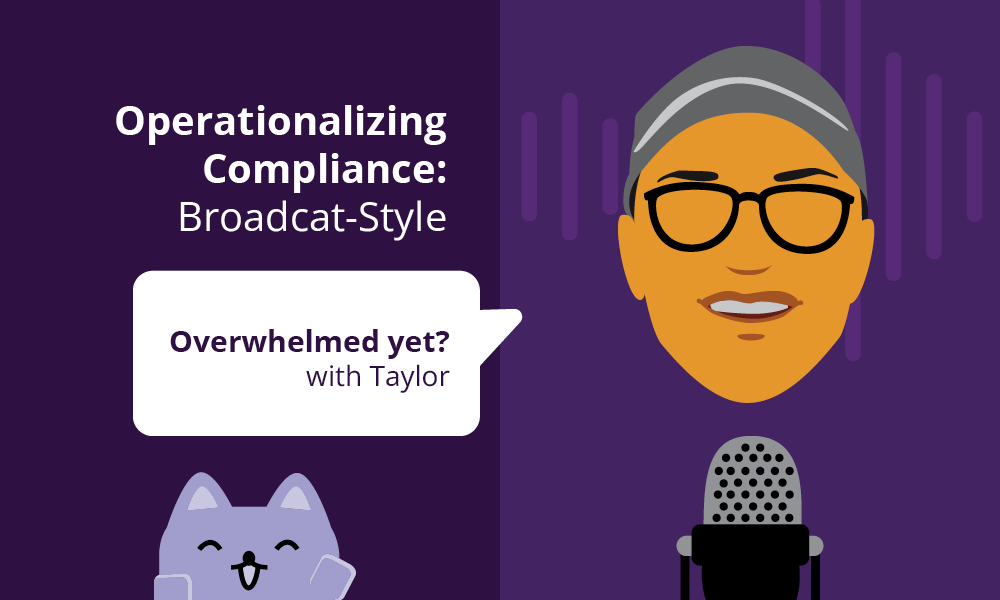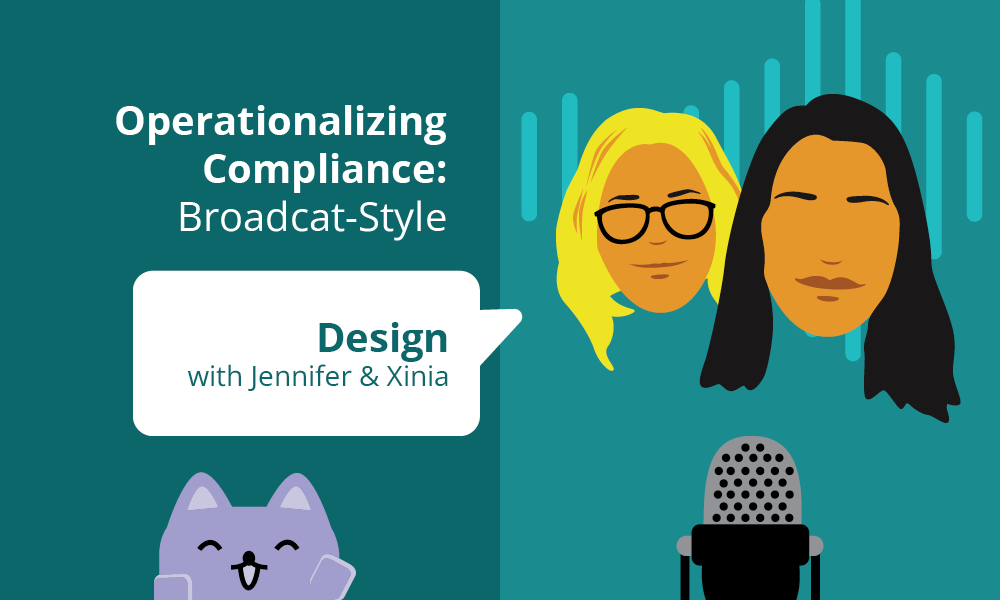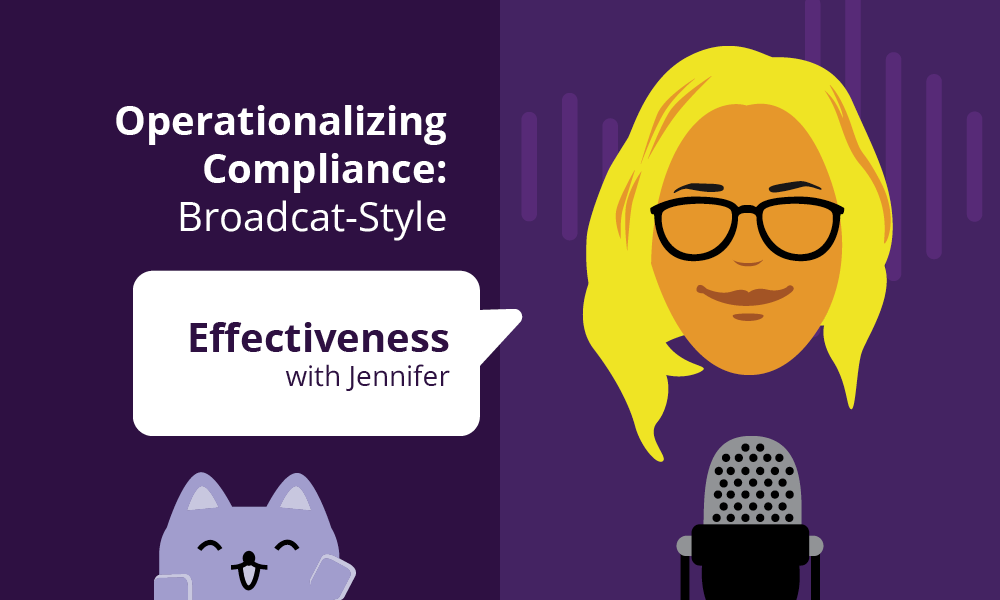Welcome to a special five-part podcast series on Operationalizing Your Compliance Program, sponsored by Broadcat LLC. Over this series, I visit with Jennifer May, Director of Compliance Advisory; Taylor Edwards, Director of Sales; Xinia Pirkey, Design Manager; Alex Klingelberger, Chief Executive Officer (CEO) and Jaycee Dempsey, Director of Customer Success. We consider a variety of ways to more fully operationalize your compliance regime, including the design and effectiveness of your communications, why the operationalization of compliance is a team sport, why simply data is not the answer and how to avoid being overwhelmed. In Part 2, I am joined by Jennifer May and Xinia Pirkey to consider your compliance program design.
May began that the key is relevance and clarity. If your training or communication is not relevant, it really does not “matter how perfect the design is or even how perfect the message is, if it is being shared with someone that’s the wrong person, it will fall flat”. In other words, your compliance team is “just wasting time blanketing the entire workplace with some piece of information that does not apply to most of them.” Regarding clarity, she said, “If you are not clear about what it is you want them to do, what the behavior is that you are trying to achieve, you will lose their attention there as well.” All of this can lead to wasted time for your employees and wasted effort for your compliance team, “potentially even starting to lose some credibility.”
Pirkey is a design professional so comes at these issues from a different perspective from May or myself. Pirkey said, “we use design, from my point of view, to leverage the content to be on point to the audience that will receive it.” As a design professional, you must always consider the user experience so “we have to think about the users and who we are trying to target.” She added, “As a designer, I come in and I try to interpret the content and I try to interpret as much as I can and ask the questions, such as “Who is this for? What am I trying to say? How do I want them to read this step by step?” You must always be cognizant not only about the audience, but also how we are projecting to them.”
Next, we considered how effective content can create credibility for your compliance function or conversely, ineffective content can demean your compliance function credibility. Pirkey began by noting that it is all about content, intoning, “we start with content.” Interestingly, she said that “a lot of times this means that we’ve come up with a format, whether it is a decision tree, an infographic, a written piece of content or other; and it is in a manner we can project it as job aid to our audience.” She also noted that conversely, there are times “we have to go back to the drawing board and decide, OK, this does not work as a decision tree. We need to think about a different format, a contrast example, or another approach.”
We closed with a discussion of the ‘secret sauce’ to creating great compliance communications tools. May believes it “is that back and forth and the community of diverse voices that we have, because we all have such unique experiences in our professional backgrounds.” When you couple this with the intent and “focus on trying to help organizations make these communications as simple, easy, straightforward” you can begin to achieve great compliance messaging. “Blending these approaches, the design method, thinking in that way, being collaborative with each other, being open with each other, and then doing that same thing on the backside with our clients too; that is the secret sauce. That’s the thing that makes Broadcat successful and a really awesome place to work with and work for.”
Join us in Part 3 where we look at operationalization.
For more information go to TheBroadcast.com









